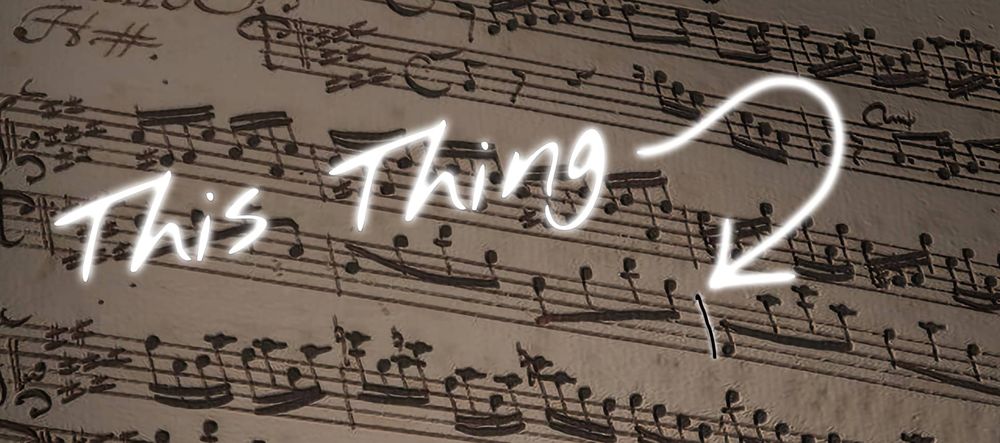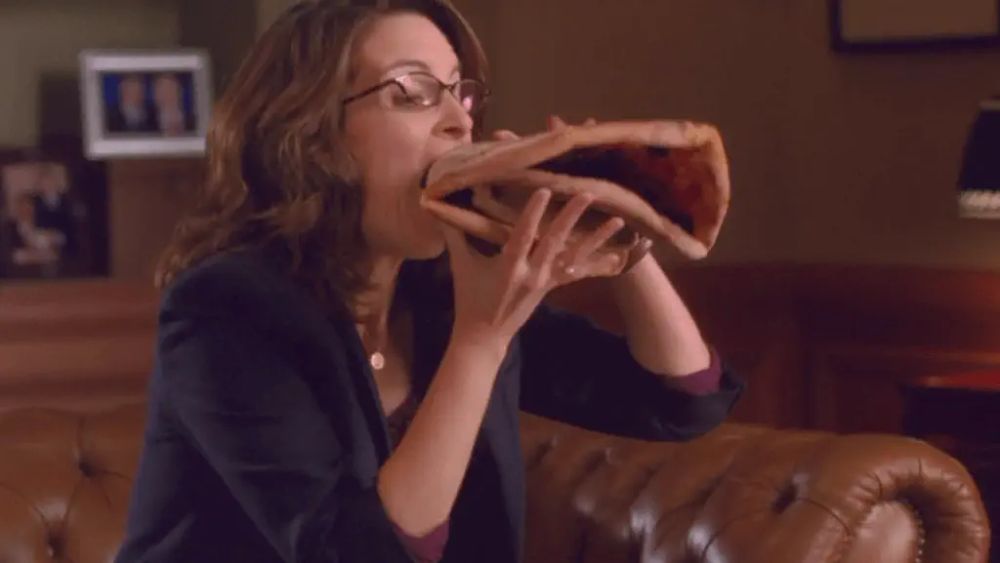In the article about Time we discussed the concept of time as it relates to music, but we can only go so far until the conversation evolves into what to do in the time that music passes through. Fundamental concepts like tempo, bpm, oscillation, all stem from an understanding of time, but what’s next after that discussion?
Before we warp our minds, gotta keep the lights on:
Syntorial
Learn MoreThank you, and now back to our content...
Definition
Rhythm
noun
A regular, repeated pattern of events, actions, processes, movement, or sound.
Rhythm is where things start to get much more interesting. In music, when we think of tempo we are thinking of the speed, or pace, or pulse, of a piece of music. Rhythm is what we do in relation to that tempo. One of the first things we can do is to make that tempo audible with a sound.
If you recall from our previous article about Time as it relates to music, one single kick drum (or any sound) per second is essentially the simplest thing that we can do to make our tempo audible. But this is only the beginning of rhythm, as we will now introduce a new concept to aid in our understanding. That is the concept of meter.
Meter
When we introduce meter to our music we are essentially creating structure. A basic tempo is simply the speed at which the music occurs over time, whether it be expressed as a word, like andante, or with a number, like 120 bpm, where bpm stands for Beats Per Minute. But as important as the tempo of a piece of music may be, it’s still just a pulse, devoid of any meaning or structure beyond that. This is where the concept of meter comes in to play. With meter, we can take our pulse and give it meaning, through the use of Accents.
Accents
If one were to follow a given tempo without any regard for accents then it might end up sounding a bit like this:
In this example there is no difference from one click to the next, as they are all the same in frequency, amplitude, and duration. This is as a basic as a tempo can get, and it offers only a steady stream of beats to align our music to. But when we apply the concept of accents to the same click pattern:
Tempo with Accents
We end up with something far more useful, as this accented pattern offers us something of great importance:
Structure.
In this example, the very first click is accented, then the next three clicks are unnaccented. We then repeat this pattern of one accented click and three unaccented clicks for as long as we want, and this gives us what we refer to as a meter for our music.
Meter is a guide.
We have made an important decision here, one that will affect our compositional decisions as long as we adhere to this particular pattern of accents. When we create chord progressions the meter will guide our harmonic rhythm. When we craft our melodic lines our phrases will be shaped by our metrical choice. Even when we want to jump around in our music to find a paticular point in time, the meter will give us a system of bars and beats to move around almost effortlessly. In short, everything in our piece of music will be affected by our choice of meter from the very beginning to the triumphant end.
So, meter is a way in which we can give our tempo, and thus, our music, structure, but how do we communicate our notion of meter to other musicians and to the greater populace?
Measures
A measure is what we call a grouping of beats that can stand alone as its own structured unit of time. Think back to our second accent example, where there was one accented beat, and then three unaccented beats. If you forgot, here it is again:
One measure of 4/4 time.
Collectively all four of those beats comprise what we call a measure of music. We then keep using the same measure structure throughout a piece of music so long as the time signature does not change. Anothe name for a measure is a bar. These two terms are essentially interchangable, although to be completely correct the word bar actually refers to the written line that is placed between two measures of music in notation.

I like to stick with “measure” most of the time, but, really, like, who cares?
Time Signatures
While talking in terms of meter is fine in the abstract, we need a more concrete way to comunicate our metrical intentions to other musicans. We can achieve this through the use of a concept called a Time Signature. A Time Signature is simply how we define our meter in more literal terms. Time Signatures attempt to convey two important pieces of information about our meter:
- The number of beats per measure of music.
- What note value will equal one beat.
Time signatures are written with two numbers, separated by a dividing line. They end up looking like mathematical fractions, and in a sense, they basically are. The number on top of the time signature is called the numerator, and it represents how many beats are in each measure. The bottom number is the denomenator, and it represents what note value will equal one beat.
The first number is a pretty simple concept, and the number could really be any whole number, from 1 all the way up to…well…whatever you want it to be. If the numerator is an even number, then you have an even meter…if the numerator is an odd number, then you have an odd meter…most on that idea a bit later on, however.
3/4 Time Signature
Duration
When disucssing time signatures we have to concern ourselves with note lengths, but what exactly does the concept of a note length really refer to? There are a few ways we can think about this.
Division
Imagine a pizza…

That pizza is a most likely round in your mind, like so:
Meat
Veggies
The Works
If it’s not…that’s ok…maybe it was a fish shape, or a square, or something. Not to worry, just think a circle for now to help the metaphor out a little bit :-) Oh, and don’t forget to change the toppings if you want something different ;-)
Anyway, at the moment the pizza is whole, as it has not been cut into any slices just yet. This uncut pizza represents the first note length that we will learn about.
The Whole Note.
Although, to be fair, a whole note would not be equal to just any size of pizza. In music a whole note refers to a notes length relative to other notes, as we shall see shortly. But we can make our whole note larger or smaller be changing the tempo of our music. The slower the tempo, the larger the pizza, or the longer the whole note will last in time.
Go ahead and make the pizza smaller by speeding up the tempo:
Meat
Veggies
The Works
60 BPM
This seemingly innocent (and delicious) pizza introduces a really important concept in music:
Relativity.
The length of a whole note, or any other note for that matter, is dependant upon the tempo of the music. As the tempo is changed, so to is the length of the whole note. This means that the length of the whole note is relative to the tempo of the music, and can be altered in real time by changing the tempo.
If the tempo of the music is 60 bpm, and the time signature of the music is 4/4, then a whole note would be four seconds long. If the tempo was 120 bpm, then a whole note would last for half as long, in this case, two seconds. So, the tempo determines note length.
We can illustrate this with an interactive graphic. Try changing the bpm using the slider and notice how the length of the whole note changes relative to the timeline. The timeline remains the same, because, well, it’s time. But the length of the whole note changes relative to the change in tempo:
Tempo: 30 BPM
Meat
Veggies
The Works
Notice also how our pizza changes in size as well, relative to the tempo of the music, and is growing or shrinking at the same rate as our whole note.
This is a subtle but important concept in music, as everything we do with rhythm will be changed by the tempo, but in the same way. We can create a pattern of rhythm and no matter the tempo, the pattern will remain the same. The pattern will only speed up or slow down, relative to the tempo of the music. This can be utilized to great effect when endeavoring to create a vocabulary of rhythmic patterns, as we will explore in a future article.
BUT!!!
Rhythm would not be very useful to us if there were only one note length. We need to figure out a way or two to make more note lengths. To do that, let’s go back to our pizza!
Subdivision
Remember this?
Meat
Veggies
The Works
Still looks yummy! 😋
Well, I don’t know about you, but I find it kind of hard to eat an entire pizza while holding the whole thing in my hands…

…and even worse, what if it’s a giant New York style monstrosity? I think it would probabaly be easier to eat it if we cut it up a little bit, don’t you think?
What then would be the most obvious cut that we could administer to this delicious pizza so as to make it just a little bit easier to handle?
Cut it in half you say?
Great idea!
Meat
Veggies
The Works
By cutting this scrumptious pizza in half we have turned one whole into two halves. The total amount of pizza has not changed at all, but we can now share this pizza much more easily with somebody else…and who doesn’t want to share their pizza with somebody else?
We can use the same idea in music to create a new note length…
The Half Note
A half note is half the length of a whole note, which I kinda hope is a bit obvious by now. This means, of course, that if you add two half notes together you end up with a whole note again.
Tempo: 30 BPM
Meat
Veggies
The Works
Notice in our interactive component above that the half note is half as long as the whole note and lasts for half as much time, no matter the tempo, as you move the BPM slider back and fourth. The pizza is cut in half as well, repesenting the idea that two halves make a whole.
The Quarter Note
If we cut our half note in half a again we end up creating two quarter notes. We call them quarter notes because each note is one quarter of a whole note. So if we were to add four quarter notes together, we would end up with one whole note again. You know what to do…
Tempo: 30 BPM
Meat
Veggies
The Works
The Eighth Note
If we cut a quarter note in half then we end up with two eighth notes. If we stick 8 of these notes together we have ourselves a whole note again.
Tempo: 30 BPM
Meat
Veggies
The Works
The Sixteenth Note
And if we cut our eighth note in half then we get two sixteenth notes…I think I have belabored the point by now…
Tempo: 30 BPM
Meat
Veggies
The Works
Note Values
Up to this point we have learned about all of these note values, or length, whichever you prefer.
- Whole Note
- Half Note
- Quarter Note
- Eighth Note
- Sixteenth Note
This groupd of note values are the macro note values, and are the most common in music. They do not represent all of the note values that exist, however…
If we were to keep dividing each note value in half we would keep creating smaller and smaller note values…well…forver. This is not all that practical, however.
- 32nd Notes
- 64th Notes
- 128th Notes
- 256th Notes
- 512 Notes
- 1024th Notes
and so on…
We can pretty safely consider any values below 32nd notes to be grouped into the category of micro note values. They may seem to be of little use, but these kinds of values can be useful when developing more subtle aspects of rhythm, such as swing, and pocket and error, which are ideas that we will discuss in a later article.
Regardless of how large or small any of these values are, they are always either half as large as the next value, or twice as large as the previous value. This concept makes them mulitplicative and/or divisive.
I am going to save the discussion of micro note values for another article, but for now, know that they exist and in certain application they can be quite useful :-)
Additive Note Values
Dotted Notes
Polyrhythms
Tuplets
Patterns
We might have a pretty good idea about note values now and how they can be varied. Let’s start using them to make actual music. To do this we need to start thinking about patterns.
Let’s look at note values from a different perspective.
One Note Length
The start of our jouney into patterns starts with one note value. It doesn’t really matter what value it is for now…pick any value that you want, because since there is only, there is nothing else to relate it to. Let’s use this note value to make some music:
This should almost immediately strike you as being rather uninteresting, as it is simply the same note length being repeated endlessly. If this was all we had then our music would be pretty boring. Luckily, we don’t have to settle.
Two Note Lengths
If we add another note length to our choices things start to get much more interesting. But what length to add…the easiest and most common answer to this question in most musical cultures around the wold is to introduce a note value that is half the length of the previous one.
If this is the case then we now have to think about naming them relative to each other.
Let’s call the first note:
Long.
…and let’s call the second note:
Short.
Let’s make a pattern where we alternate between using the long and short note values.
This pattern is much more interesting than the previous pattern, because it changes.
For example, we could focus on two note lengths to start. Long and short. There would then be four options.
The long note is of a certain length that we can specify by choosing a tempo, in beats per minute, and then choosing a duration in relation to the tempo to represent one beat. This is how time signatures work. We choose a speed of beats per minute, and then we choose a duration that will represent one beat on a piece of paper, or in a music creation application, or on a metronome, or anywhere else for that matter. The long duration, or note, will be represented by a full bar, and the short note will be exactly half as long as the long note.
Three Note Lengths
Now let’s add another note length that is exactly half as long as our short note. This will now change our definitions of note duration, or length, so that the short note will now be the medium note, and the new note will now be our short note.
With these three different note lengths we now have 6 different permutations possible.
And this concept can expand as far and as wide as needed. But at some point we will notice that large permutations and simply groupings of smaller permutations, so we can break complex rhythmic patterns down into simpler combinations of patterns. Four Note Lengths
In this table each note length continues the pattern of making every new note half as long as the previous note. We have also had to rename our note lengths because we have more than three of them now and long, medium and short will no longer suffice. We can continue down this path of creating new note lengths that are half as long as the pervious notes lengths, and we will do so, but it would be good time to point out a few things, and explore a few different ideas that help make rhythm an even more compelling discussion. Every time we add a new note length to our collection of note lengths we create a more complicated underlying grid structure.
With two different note lengths the longest note defines the size of the grid but the second note length, which is half as long as the first note length, divides the grid into smaller pieces. This is the beginning of the idea of subdivision.
When we add a third note length we introduce a smaller subdivision into our rhythmic structure. Notice that the third note length, which is half as long as the second note length, is also one quarter as long as the first note length. This makes complete sense if you think about how division works. Any time you divide a number by two it becomes half as large as the previous number. If you divide the new number by two again then then the answer will be half the size of the new number, but it will also be one quarter the size of the original number.
With four different subdivisions we are breaking up our grid into eight cells. At this point we could create a taxonomy to verbally describe each subdivision, but it will be increasingly messy and specific. The constant is that each new subdivision is half as long as the last.
With five different subdivisions we are breaking our grid up into sixteen cells. At this point we have a wide range of note lengths to choose form to construct our rhythmic patterns. This pattern of reducing length by half, or doubling length is considered exponential growth. But there are a few other concepts in rhythm that will be helpful in developing a more rich and expressive set a rhythmic values to use in our development of rhythmic patterns. Dotted Notes
Notice in this grid that there are four different note lengths, but that they are not completely based on the concept of reducing length by half. The second note length in actually three quarters as long as the longest note length, and not half as long, as it was before. This is based upon a linear decrease in size, one in which every subsequent note value is a linear addition of the smallest note value in the grid.
The smallest note length in this grid is one quarter the size of the grid, so we can build note lengths that are simply additions of of one quarter of the grid, until we have created a note length that equals the total length of the grid.
In this example the smallest note is one quarter of the grid, so we can make a note that is two quarters long, a note that is three quarters long, and finally a note that is all four quarters long, which is the biggest note that we can create in this grid.
If you enjoyed this article and found it useful,
then please consider donating to support :-)
If you enjoyed this article and found it useful, then please consider donating to support :-)

